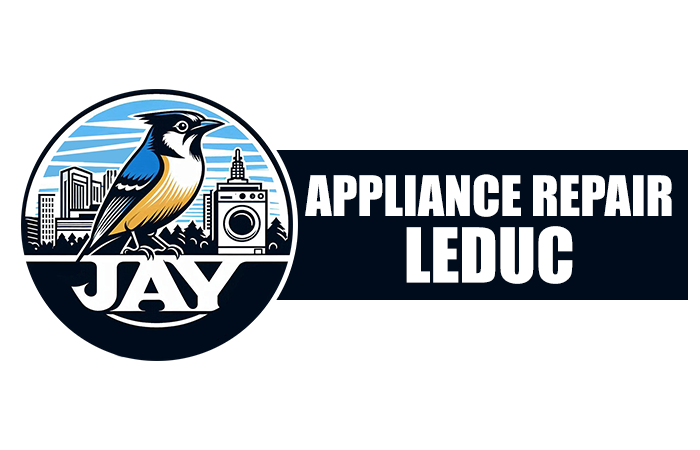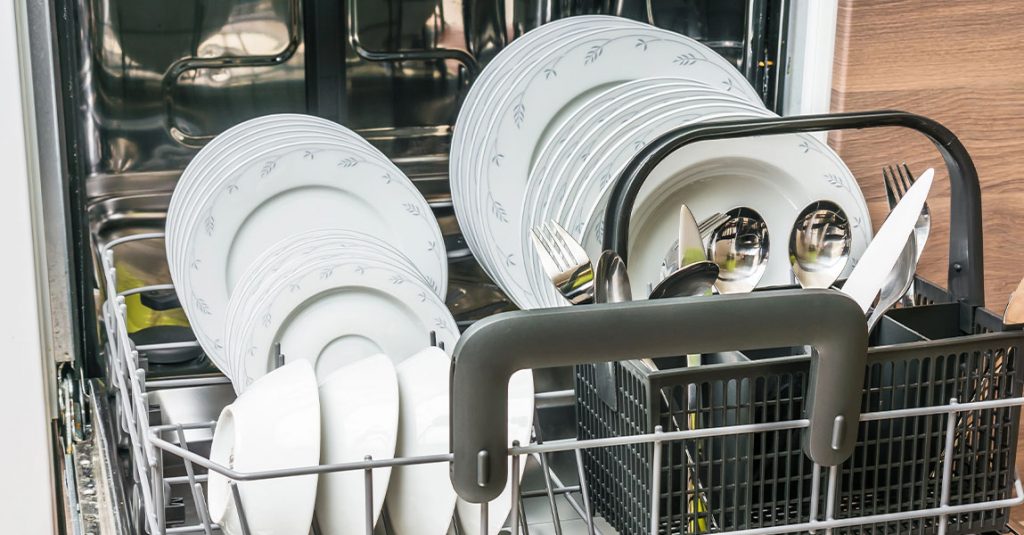When a dishwasher door does not close or latch securely, it can stop the entire cycle from starting. We rely on our dishwashers daily, so this issue can feel frustrating. In this guide, we will look at the most common reasons behind a door that will not close, how to troubleshoot safely, and when it may be time to reach out for help.
Common Causes of a Dishwasher Door Not Closing
Many times, the issue is caused by something simple. One of the most frequent reasons is that dishes or utensils are sticking out and blocking the door. We sometimes overload the racks or place tall items incorrectly. That extra height can press against the spray arms or the door seal, keeping the latch from engaging.
Another common cause is a misaligned rack. If one of the wheels pops off its track, the rack may sit unevenly and block the door. Checking each track and sliding the racks smoothly in and out can confirm this. We often find that correcting the rack position restores the door’s function immediately.
Inspecting the Latch and Strike Plate
The latch mechanism is the small part on the inside of the door that clicks into the strike plate when the door shuts. Over time, the latch can wear out or shift slightly. We can carefully inspect it for cracks, loose screws, or buildup of detergent and grime that might prevent it from engaging.
If the strike plate is out of alignment, the latch cannot catch. We may be able to adjust its position with a screwdriver. Gentle cleaning of both parts can also help. If the latch itself is broken, replacement may be the only option. Because the door latch is a safety feature, it is important not to bypass it.
Problems with the Door Gasket
The rubber gasket that lines the edge of the door provides a watertight seal. However, if it becomes dirty, warped, or brittle, it can stop the door from closing properly. We can run a damp cloth along the seal to remove food particles or hardened soap.
If cleaning does not help, a close look for tears or flattening is necessary. A worn gasket often prevents the door from shutting completely. In these cases, replacing the seal can restore both the latch and the dishwasher’s ability to keep water contained during a cycle.
Alignment and Leveling Issues
A dishwasher that is not sitting level can put stress on the hinges and door alignment. Over time, this may cause the latch to miss its target. Using a carpenter’s level on the top edge of the dishwasher can quickly show if the unit has shifted.
We can adjust the leveling legs at the base of the machine to correct the tilt. After leveling, the door often closes much more smoothly. This is especially true in kitchens where flooring has settled slightly or when the dishwasher was moved during recent renovations.
Hinge and Spring Troubles
Dishwasher doors use springs and hinges to open and close with the right amount of tension. If one spring becomes loose or a hinge bends, the door may hang unevenly. This can keep the latch from aligning with the strike plate.
We can look underneath the unit, where the springs are usually connected. If a spring is broken or has slipped out of place, replacement is usually required. It is worth noting that working with springs can be tricky, so this might be an area where calling on our team is the safer choice. For example, if needed, we can provide appliance repair services in Leduc to address these problems directly.
Internal Parts That Affect the Door
In some cases, internal parts like the door switch or control system can create the impression of a latch issue. The dishwasher may not recognize that the door is shut if the switch is faulty. This prevents the cycle from starting even if the door seems closed.
We can test the switch with a multimeter if we are comfortable, but often it requires replacement. It is one of those parts that directly connects to the dishwasher’s safety system. Handling it incorrectly could cause electrical issues, so it is important to approach this carefully.
Preventing Future Door Issues
We can take simple steps to reduce the chance of door problems returning. Firstly, we should always load dishes properly, keeping large pans and utensils from blocking the spray arms or pressing against the door. Secondly, cleaning the gasket regularly with warm water keeps it flexible.
In addition, we can check that the dishwasher remains level every few months. Vibrations during operation can slowly loosen screws or shift the unit slightly. Staying ahead of these changes will extend the life of the door components and keep the machine running smoothly.
When to Seek Professional Help
Sometimes, despite careful checks, the door still will not close or latch. If replacing a latch, hinge, or gasket feels outside our comfort level, it is better to get assistance. A professional can quickly identify if the issue is mechanical or electrical.
In cases where the door fails to latch even after adjustments, it may be a deeper issue with the control board or wiring. Rather than guessing and risking further damage, scheduling a service call ensures the dishwasher is fixed safely. For door-specific problems, we can rely on dishwasher repair in Leduc to handle the diagnosis and repair properly.
Cost and Time Considerations
We often wonder if a repair is worth the effort. In many situations, fixing a latch, hinge, or gasket is affordable and quick. Replacement parts are generally less expensive than buying a new dishwasher, and the repair usually takes under an hour for an experienced technician.
However, if multiple issues occur at once, such as a faulty latch combined with electrical failures, the cost may rise. At that point, weighing the age of the dishwasher and comparing repair versus replacement becomes necessary. Our team can provide guidance on which choice makes the most sense for both the budget and the household’s needs.
Extra Tip: Temporary Solutions
While we should not run the dishwasher with a broken latch, there is a temporary step that helps us keep the kitchen functional until repairs are complete. We can hand wash the most important items and use the dishwasher racks for drying. This prevents dishes from piling up and reduces stress while waiting for service.
Although it is only a short-term measure, it can make the repair process feel less urgent. Still, for the dishwasher to function correctly and safely, professional repair remains the final step. If the door continues to resist closing, the best action is reaching out through contact us to set up a visit.
FAQs
Why does my dishwasher door bounce back open?
This usually happens when something inside is blocking the racks or when the latch is out of alignment. Checking the racks and the strike plate often solves the issue.
Can I replace a dishwasher door latch myself?
It is possible if we are comfortable with tools and careful with the process. However, because the latch is a safety feature, calling a professional is often the safer choice.
How do I know if the gasket needs replacing?
If the seal looks cracked, flat, or no longer feels flexible, it is likely worn out. A new gasket should restore the door’s ability to close securely.
What if the dishwasher is level but the door still will not latch?
In that case, the issue may involve the hinges, springs, or internal switches. A technician can test these parts and recommend the correct fix.
Is it safe to run a dishwasher with a faulty latch?
No, it is not safe. The latch ensures the door remains sealed against leaks. Running the machine without a secure latch can cause water damage and electrical hazards.

